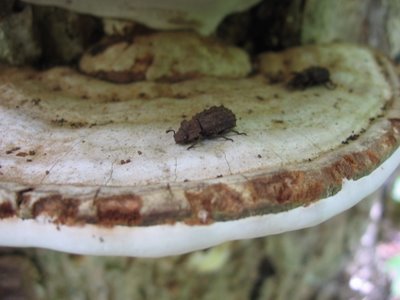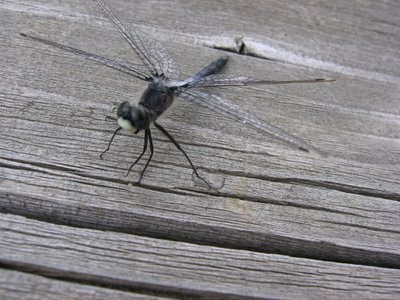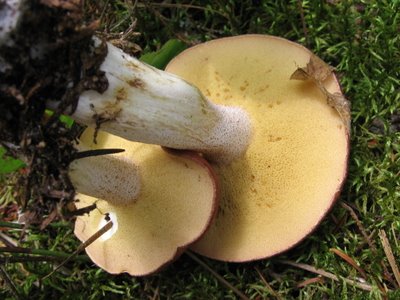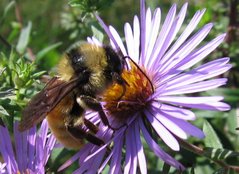
 Entoloma
EntolomaAlgonquin Provincial Park, Bat Lake
25 June 2006
Entoloma are very difficult to identify to species. The stain on the gills is indicative of the pink spore colour indicative of Entoloma. It looks something like Entoloma clypeatum in George Barron's "Mushrooms of Ontario and Eastern Canada," but it would only be guessing to label it as this species. For a description of the Rove Beetle in this picture, see under insects.


























